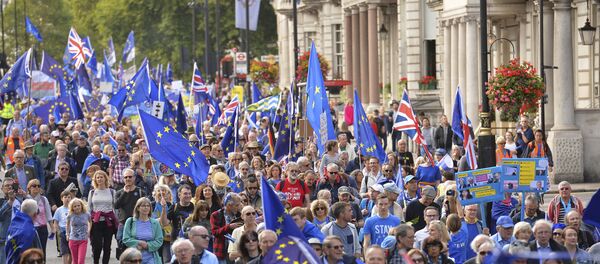The number of reported hate crimes in 2016 increased by nearly five percent to over 6,100, according to annual figures published by the FBI.
As ever, racially-driven hate crimes based were by far the biggest category, with over half of reported hate crime incidents motivated by race, ethnicity, or ancestry. Among those, nearly half were anti-black crimes, and nearly 10 percent anti-Latino. About one in five were anti-white, although white people were still much less likely on a per capita to suffer a hate crime than minority groups.
2016 Hate Crime Statistics were gathered from the more than 6,000 criminal incidents that were reported motivated by bias toward race, ethnicity, ancestry, religion, sexual orientation, disability, gender, or gender identity. Full Details: https://t.co/YbUPJksP6y pic.twitter.com/pZRtjkr2eL
— FBI New York (@NewYorkFBI) November 13, 2017
Hate crimes motivated by religion were the next biggest category, making up over 20 percent of reported incidents. Jews and Muslims were the two most common targets, accounting for nearly 54 percent and over 24 percent respectively of religiously motivated hate crimes.
There were increases in reported hate crimes nearly across the board. Reported anti-Muslim hate crimes rose by nearly 20 percent, anti-white by 17 percent, anti-Latino by 15 percent, and anti-Jewish by 3 percent. The number of anti-black crimes remained nearly flat from 2015 to 2016. The FBI reported a nigh on seven percent rise in hate crimes in 2015, driven in large part by a 67 percent increase in reported hate crimes against Muslims.
New FBI hate crime statistics: Jews were the target of 54% of religiously-motivated hate crimes in 2016, despite constituting just 2% of the US population https://t.co/OukN4qt0fp
— (((Yair Rosenberg))) (@Yair_Rosenberg) November 13, 2017
There were also increases in hate crimes motivated by sexual orientation — by about two percent — and gender identity — by nearly nine percent. Together, they made up nearly one in five of all hate crimes reported by the FBI in 2016.
Nearly 26 percent of reported hate crimes were intimidation, about 24 percent were assault, while over 41 percent were property crimes.
Questionable Data
For one, what constitutes a hate crime varies by state. Federal hate crime laws ban crimes based on race, color, religion, national origin, gender, sexual orientation, gender identity, or disability, but some places don't have such laws at the state level, meaning some hate crimes go unpunished.
However, muddling the picture is the question of intent. White on black violence, for instance, is not always racially motivated, but proving and disproving hateful intent alike can conversely be problematic. Complicating the picture further is that wiser criminals know the penalty for hate crime will be more severe than "regular" crime, and may go to great lengths to obscure their true motive.
Moreover, between 1996 and 2016, the FBI reported between 6,000 and 10,000 hate crimes each year in the US — but when the US Bureau of Justice Statistics (BJS) surveyed large segments of the population between 2007 and 2011 to gauge a more accurate picture, concluded there were nearly 260,000 such crimes annually.
If the BJS' figures are accurate, the bureau typically underestimates hate crimes by a magnitude of over 40 times. The issue may stem from the data's source — the information is based on voluntary reporting by over 15,000 local law-enforcement agencies.
In the @FBI hate crime report,92 cities over 100K in population reported 0;that number doesn't add up #hatecrimetalk pic.twitter.com/pRqClKxRZK
— ADL (@ADL_National) November 16, 2015
In a statement, Anti-Defamation League chief Jonathan Greenblatt said there was a "dangerous disconnect" between the rising problem of hate crimes and the lack of "credible" data being reported.
"Police departments that do not report credible data to the FBI risk sending the message this is not a priority issue for them, which may threaten community trust in their ability and readiness to address hate violence. We will need an all-hands-on-deck approach — including community organizations, law enforcement organizations, civic leaders, and the active involvement of Justice Department and FBI officials — to address hate crime underreporting," he said.
Similarly, the Sikh Coalition noted that the data showed a mere seven anti-Sikh hate crime incidents in 2016, which it claimed was"the tip of the iceberg."
"It could happen to any one of us."
— Splinter (@splinter_news) March 7, 2017
The FBI is investigating the shooting of a Sikh American man at his own home as a hate crime: pic.twitter.com/bQOlE51hEg
The organization conversely estimates Sikhs remain hundreds of times more likely to experience hate crimes than the average American because of their small population and the frequency with which they are targeted.
In March, a Sikh man was shot in Kent, Washington after the attacker told him "go back to your own country."
In 2016, the Sikh Coalition received legal intakes from 15 Sikhs who believed they were subjected to hate incidents. Since the start of 2017 there have been 13.





